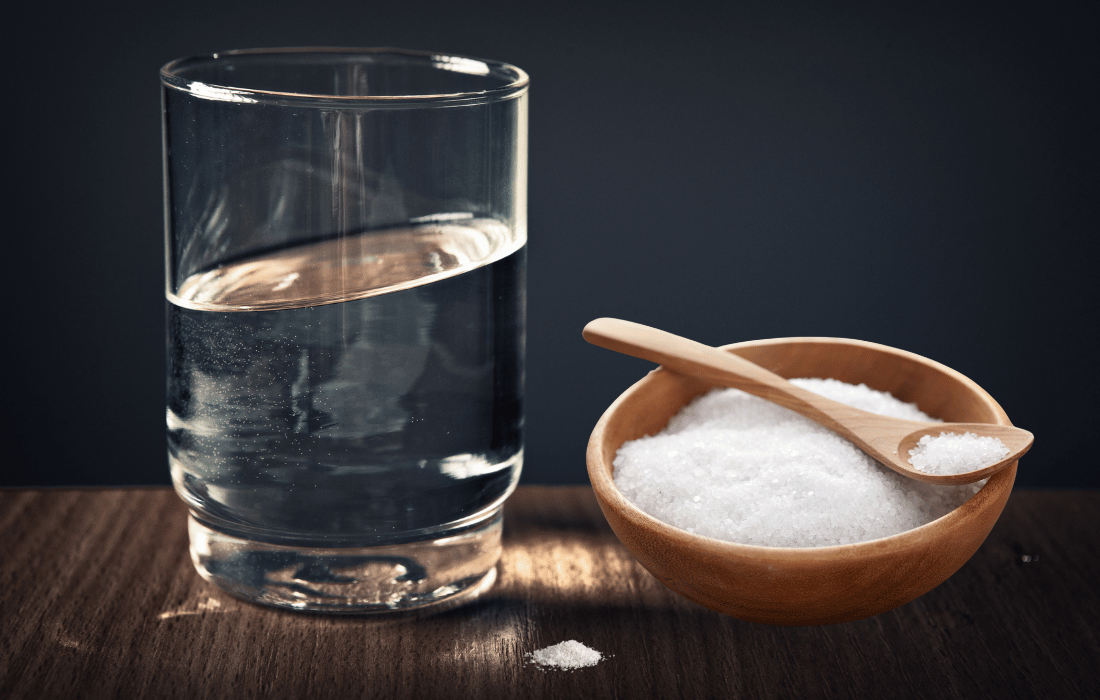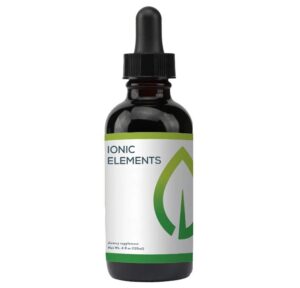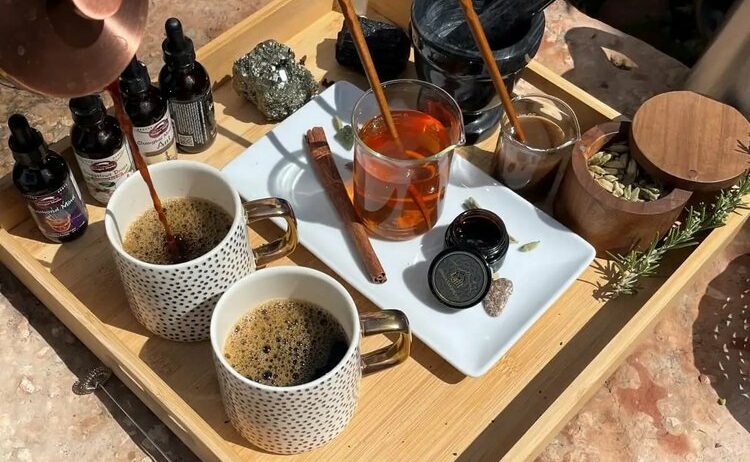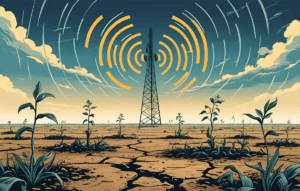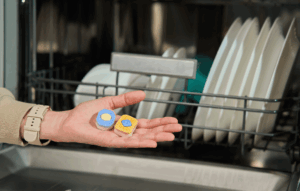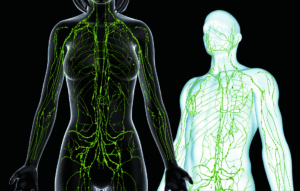We’ve all heard it before: “Drink more water!” The golden rule of hydration has been drilled into us since childhood. Carry a water bottle, drink eight glasses a day, and you’re golden, right?
Not exactly.
Hydration isn’t just about slamming back bottles of purified water. In fact, if you’re drinking reverse osmosis (RO) water or any other highly purified water without replacing lost minerals, you’re setting yourself up for chronic dehydration. I should know—I grew up in a family that sold and serviced reverse osmosis systems, constantly promoting the benefits of pure water while missing a key component: the need to replenish electrolytes.
Roughly 75% of Americans are chronically dehydrated, and it shows. No wonder so many people shuffle through life like zombies, struggling with fatigue, brain fog, and sluggish performance. I used to think I was doing everything right— making sure to drink half my body weight in ounces of the purest water, “staying hydrated”—but years of severe cramping and fatigue during my athletic competitions make me now realize I was giving my competitors an advantage. The problem wasn’t a lack of water; it was a lack of electrolytes and salt. Without adequate sodium and electrolytes, I wasn’t hydrating—I was just flushing essential minerals out of my system.
The Role of Salt: The Missing Link in Hydration
Salt has been unfairly demonized for decades. The narrative that “salt causes high blood pressure and heart disease” is based on outdated studies that ignored the importance of bio-individuality. In reality, salt is essential for life.
The Sodium Scare Tactic: How We Got Here
Before we dive into why salt is essential, let’s address the elephant in the room: the fear of sodium.
Organizations like the World Health Organization (WHO) have long declared war on salt, claiming that excess sodium intake contributes to millions of deaths annually. They recommend capping sodium intake at a mere 2 grams per day, despite evidence suggesting that the number is way too low—especially for active individuals.
Where does this nonsense come from?
Back in the 1960s, researcher Lewis Dahl conducted studies on rats, feeding them absurdly high amounts of sodium and noting an increase in blood pressure. The problem? The rats were consuming the equivalent of 500 grams of salt per day. No human eats anywhere near that much, but that didn’t stop public health officials from using it as justification for the anti-salt movement.
Fast forward to today, and we now know that moderate-to-high sodium intake (4-6 grams per day) is actually associated with better cardiovascular health. Studies like the INTERSALT study (1988) and the Framingham Offspring Study (2017) show that low-sodium diets can increase blood pressure and mortality risk. Yet, health organizations continue pushing sodium restriction, cherry-picking data to fit their narrative.
Why Salt is Binding for Hydration
Prevents Overhydration: Drinking water without salt and electrolytes flushes out minerals, leading to dehydration at a cellular level.
Supports Fluid Balance: Sodium, the primary component of salt, regulates water retention and prevents excessive loss of fluids through urination.
Optimizes Nerve Function: Without enough sodium, nerve signaling is impaired, leading to muscle cramps, weakness, and brain fog.
Enhances Energy Production: Sodium and potassium power the sodium-potassium pump, which helps convert stored energy into ATP (cellular energy).
Regulates Blood Pressure Naturally: Contrary to popular belief, reducing salt intake doesn’t always lower blood pressure; in fact, low sodium diets can lead to insulin resistance and hormonal imbalances.
Not All Salt is Created Equal: The Best and Worst Options for Hydration
Salt isn’t just a seasoning—it’s a foundational nutrient for hydration, nerve function, and overall health. But not all salts are created equal. Some have been stripped of their minerals, while others contain heavy metals or microplastics.
Worst: Processed Table Salt – Avoid at All Costs
Most table salt isn’t real salt—it’s 97.5% sodium chloride with the remaining 2.5% made up of chemicals, anti-caking agents, and additives like aluminum compounds. During processing, it’s stripped of its natural minerals and then superheated to over 1,200°F, altering its structure and making it harder for your body to process.
The result? Instead of hydrating you, table salt dehydrates you.
Your body has to pull water from its cells to neutralize the excess sodium chloride, disrupting fluid balance and putting stress on your kidneys. With table salt hiding in nearly all processed foods, most people are unknowingly overloading their bodies with an unnatural, toxic form of sodium.
If you’re still using white table salt, it’s time for an upgrade.
Better: Pink Himalayan Salt – Not as Beneficial as You Think
Pink Himalayan salt has built a reputation as a superior, mineral-rich alternative to table salt. Its pink hue comes from trace amounts of iron oxide (aka rust), along with small quantities of calcium, potassium, and magnesium.
However, while it does contain more minerals than table salt, the actual mineral content is negligible. You’d have to consume massive amounts of pink salt to get any meaningful health benefits—which no one does.
There are also contamination concerns. While controversial in certain health circles, there are several studies that have found that Pink Himalayan salt can contain heavy metals like lead, cadmium, and arsenic due to its geological composition. Additionally, the marketing around pink salt has been highly deceptive—despite the name, it’s not actually sourced from the Himalayas but from the Salt Range of Pakistan.
While it’s certainly better than refined table salt, it’s far from the best option for optimizing hydration and mineral balance.
Best: Baja Gold Sea Salt – The Most Mineral-Rich Option
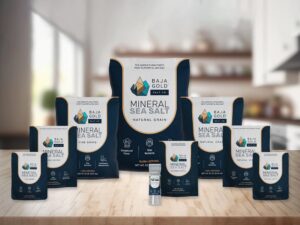
Unlike processed table salt and Pink Himalayan salt, Baja Gold Sea Salt is truly in a league of its own. Harvested from the pristine waters of the Sea of Cortez, it contains over 50 trace minerals and electrolytes, including significantly higher levels of magnesium, potassium, calcium, and boron.
What makes Baja Gold superior?
- Lower Sodium, Higher Minerals – Unlike Pink Himalayan salt (which is 36-38% sodium) and table salt (which is up to 39% sodium), Baja Gold contains only 29.5-31.5% sodium, leaving more room for vital minerals.
- Naturally Moist & Bioavailable – Unlike dry, mined salts, Baja Gold retains natural moisture, which enhances mineral absorption and improves hydration at the cellular level.
- Free from Heavy Metals & Microplastics – Unlike many sea salts on the market today, Baja Gold is regularly tested to ensure purity.
If you’re serious about hydration, electrolyte balance, and overall health, switching to Baja Gold Sea Salt is one of the simplest, most effective upgrades you can make.
The Role of Electrolytes in Hydration
Beyond sodium, other electrolytes play a crucial role in hydration and overall physiological function:
Potassium: Works with sodium to regulate blood pressure, nerve transmission, and muscle function.
Magnesium: Required for over 300 enzymatic reactions, magnesium is vital for muscle relaxation, energy production, and nerve function.
Calcium: Not just for bones, calcium also aids in nerve transmission and muscle contractions, including the heartbeat.
Chloride: Helps maintain pH balance, stomach acid production, and hydration at the cellular level.
Trace Minerals & Fulvic Acid: Elements like boron, chromium, and selenium support energy metabolism, immune function, and overall cellular health.
These minerals don’t just keep you hydrated; they determine how well your body performs under stress, during exercise, and throughout daily life.
The Best Electrolyte Options
Not all electrolytes are created equal. Many store-bought sports drinks and hydration powders are loaded with artificial sweeteners, colors, fillers, and unnecessary sugar, which can do more harm than good. If you’re serious about optimizing hydration, performance, and recovery, here are the best high-quality electrolyte supplements that deliver real results.
1. Jigsaw Health Electrolyte Supreme – A Full-Spectrum, Sugar-Free Hydration Solution
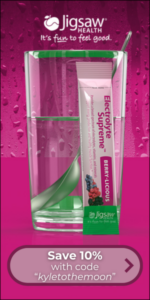 Jigsaw Health’s Electrolyte Supreme is a balanced blend of sodium, potassium, magnesium, calcium, and chloride, designed to support energy, muscle function, and hydration without unnecessary sugar or artificial additives.
Jigsaw Health’s Electrolyte Supreme is a balanced blend of sodium, potassium, magnesium, calcium, and chloride, designed to support energy, muscle function, and hydration without unnecessary sugar or artificial additives.
Why It’s Great:
- Contains highly bioavailable magnesium, which most people are deficient in
- No artificial colors, flavors, or preservatives—just clean, essential minerals
- Sweetened with stevia instead of sugar, making it a great option for those following low-carb or keto diets
- Supports adrenal function and reduces muscle cramps and fatigue
- Comes in convenient powder packets that mix easily with water
Best For:
- Athletes and high performers looking for complete electrolyte support
- Individuals following low-carb or keto diets who need to replenish lost sodium
- Anyone experiencing muscle cramps, fatigue, or brain fog due to electrolyte imbalances
2. Purium Ionic Elements – The Power of Trace Minerals and Fulvic Acid
Purium’s Ionic Elements is a liquid electrolyte supplement that provides trace minerals and fulvic acid, a compound that enhances nutrient absorption and cellular hydration. Unlike many powdered electrolyte mixes, this formula delivers a broad spectrum of essential minerals in an easily absorbable liquid form.
Why It’s Great:
- Contains over 70 trace minerals, including boron, chromium, and selenium, which support cellular energy and immune function
- Features fulvic acid, which enhances the absorption and transport of minerals into cells
- Helps restore mineral balance in individuals who drink a lot of purified or reverse osmosis water
- Supports detoxification, brain function, and overall cellular hydration
Best For:
- Individuals looking for a whole-food-based electrolyte supplement
- Those drinking purified or reverse osmosis water, which is stripped of essential minerals
- Anyone experiencing brain fog, fatigue, or poor recovery due to a lack of trace minerals
3. Jigsaw Health Adrenal Cocktail – Replenish Sodium and Potassium for Stress Recovery
The Jigsaw Health Adrenal Cocktail is designed to support hydration while also replenishing key minerals needed to regulate stress and energy production. It contains whole-food sources of vitamin C, sodium, and potassium to help balance electrolytes and prevent adrenal fatigue. A scoop of this with water is the first thing I consume daily upon waking.
Why It’s Great:
- Provides a balanced dose of sodium and potassium to support hydration and stress recovery
- Includes whole-food vitamin C, which is crucial for adrenal function and collagen production
- No artificial sweeteners, colors, or preservatives
- Helps prevent the common symptoms of adrenal fatigue, such as dizziness, brain fog, and energy crashes
Best For:
- Individuals under high stress or dealing with adrenal fatigue
- Those who experience lightheadedness, dizziness, or low energy from low sodium intake
- Athletes and active individuals needing a natural electrolyte boost
4. Lajit Gold Shilajit – A Natural Source of Fulvic Minerals and Nutrient Absorption
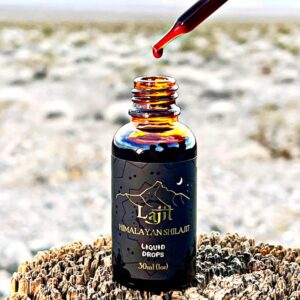
Lajit Gold Shilajit is a high-quality, purified resin rich in fulvic and humic acids, which help transport nutrients deep into the cells for maximum absorption. While it doesn’t contain traditional electrolytes like sodium, potassium, or magnesium, its unique bioactive compounds enhance mineral uptake, energy production, and cellular hydration.
Why It’s Great:
- Packed with fulvic acid, which improves the absorption and bioavailability of essential minerals
- Supports mitochondrial function and ATP (energy) production
- Contains natural antioxidants that aid in detoxification and immune function
- Helps replenish trace minerals lost due to modern food processing and depleted soils
Best For:
- Those looking to improve mineral absorption and cellular hydration
- Individuals who drink purified or reverse osmosis water may lack trace minerals
- Athletes and biohackers seeking enhanced energy production and recovery
These electrolyte and mineral supplements provide a superior alternative to mainstream sports drinks, ensuring optimal hydration without harmful additives and excess sugar. Whether you’re training hard, recovering from stress, or simply looking to improve energy levels and cognitive function, incorporating high-quality electrolytes and fulvic minerals into your routine is a game-changer.
Final Thoughts: Hydrate Smarter
If you’ve been guzzling purified water and wondering why you still feel fatigued, dizzy, or cramp easily, now you know why. Hydration isn’t just about drinking more water—it’s about keeping the right minerals in balance.
Ditch the anti-sodium propaganda, throw out the bleached table salt, and upgrade to Baja Gold and high-quality electrolytes. Your body will thank you.

